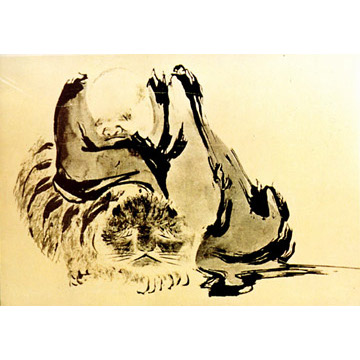Stage Four: Meditation (samādhi)

As we become progressively more adept at contemplation, described in Part 3, the mind becomes progressively more powerful, awareness more keen, and the body and mind more in harmony with one another. At some point, we naturally and automatically enter the next and last stage of the spiritual path: meditation, or samādhi. Samādhi is characterized by the absence of an individual self. With no self around, there is also no actor present who is meditating, i.e., subject and object are merged into one. To say, "I am meditating" is thus an oxymoron, because there is no individual "I" to be found.
With the full abandonment of ego-self and full integration of Buddha Self come additional spiritual experiences. We may experience divine union and the birth of an immortal fetus (Pinyin, yang tan shao), marking the integration of our male and female aspects, and we may begin to germinate the seed that arises from that integration.
The first stage of meditation arises as we are contemplating a "seed" so intently that all else vanishes from view--there is just the "seed." We, the actor, vanish as we enter a realm of timelessness and spacelessness called samprajnata samādhi, or savikalpa samādhi.
During the second stage of meditation, the "seed" itself vanishes and we enter the Void. This pinnicle of meditation is called asamprajnata samādhi, or nirvikalpa samādhi, and is refrenced in the Buddha's Eightfold Path as the eighth and last step on the journey: Samyak-samādhi, or perfection of meditation. In asamprajnata samādhi, the ego self has been completely transcended--there is no subject, no object, no actor, and nothing acted upon. We merge with the infinite.
There is no method involved in attaining meditation, i.e., there is nothing we can do to make ourselves meditate. The only way to get there is to, step-by-step, develop our ability to concentrate and contemplate, and many methods exist for learning these. Once we enter meditation, however, methods vanish.
The first time we encounter meditation can be startling and we may find we can't maintain it. The more we engage with it, however, the more easily we can move into it when we choose. Sitting practice, now, begins with pointing the mind at an object of concentration and watching it as it becomes subsumed by the object (samprajnata samādhi) and then dissappears entirely (asamprajnata samādhi). When we come out of meditation, we return to the sensory realm where the ego again resides, but our mind is unfettered by the ego becuse it has observed reality through a new lense, one devoide of ego-desire.
The Concluding Song
In the beginning there was nothing, nor was anything lacking. The paper was blank. We pick up the paint brush and create the scene...The landscape, the wind whipping water into waves.
Everything depends upon the stroke of our brush.
Our Ox lets the good earth lead it,
Just as our brush allows our hand to move it.
Take any direction, roam the world to its farthest edge.
All comes back to where it started... to blessed Emptiness.
I have offered a very brief overview of the sequence of stages a Chan devotee will travel. My intent has not been to provide a guide or manual for Chan practice, but to try to distinguish Chan as a spiritual/ascetic journey from its popularlized image as something else. There are many articles on this website available to the reader interested in starting or resuming Chan practice and I am happy to offer suggestions and respond to questions should they arise. It's my hope that the mystical tradition of Chan will continue to made available to all those seeking answers to life's most challenging questions, and solutions to the struggles and hardships endemic to the human condition.
Chuan Zhi
